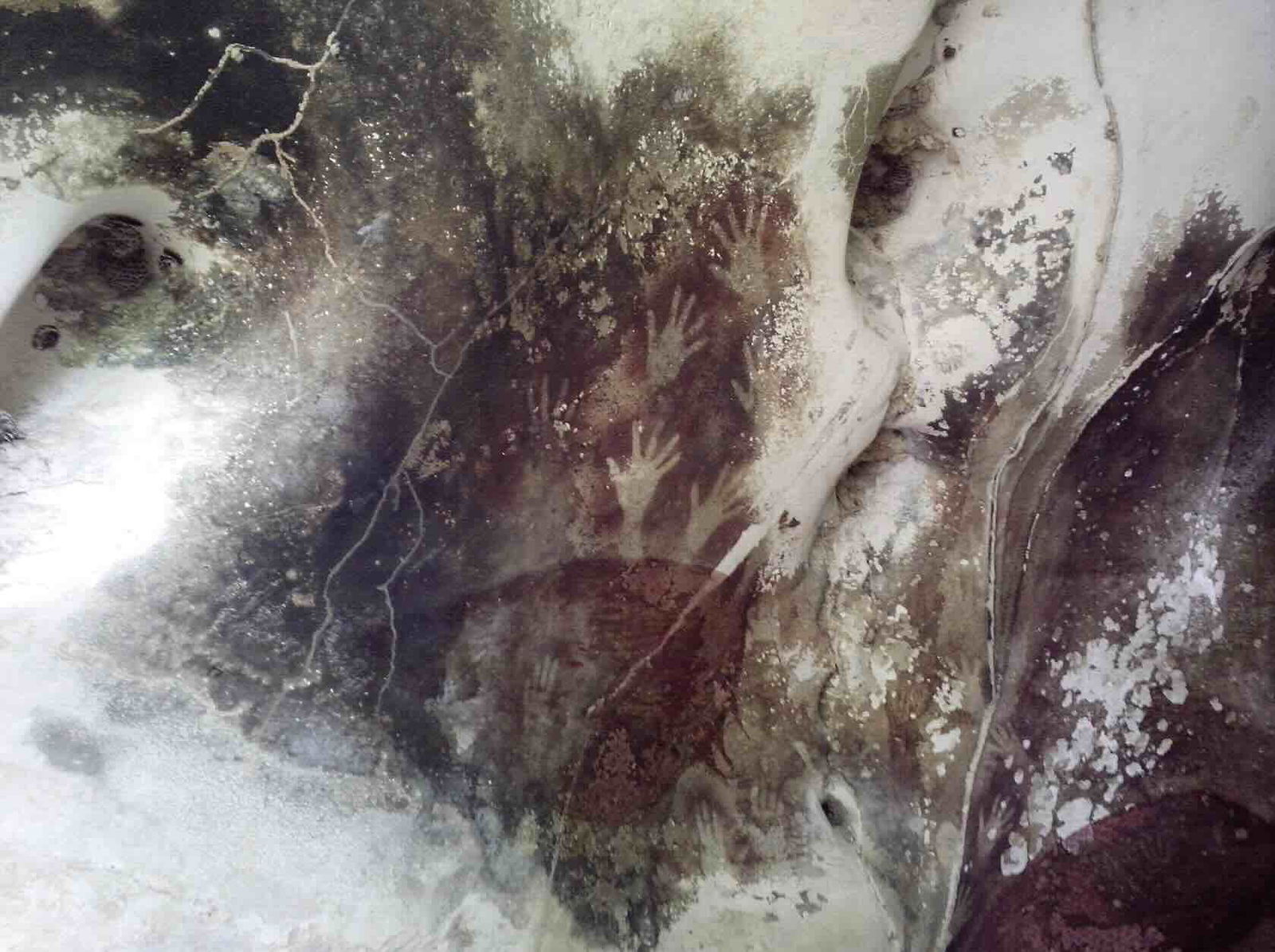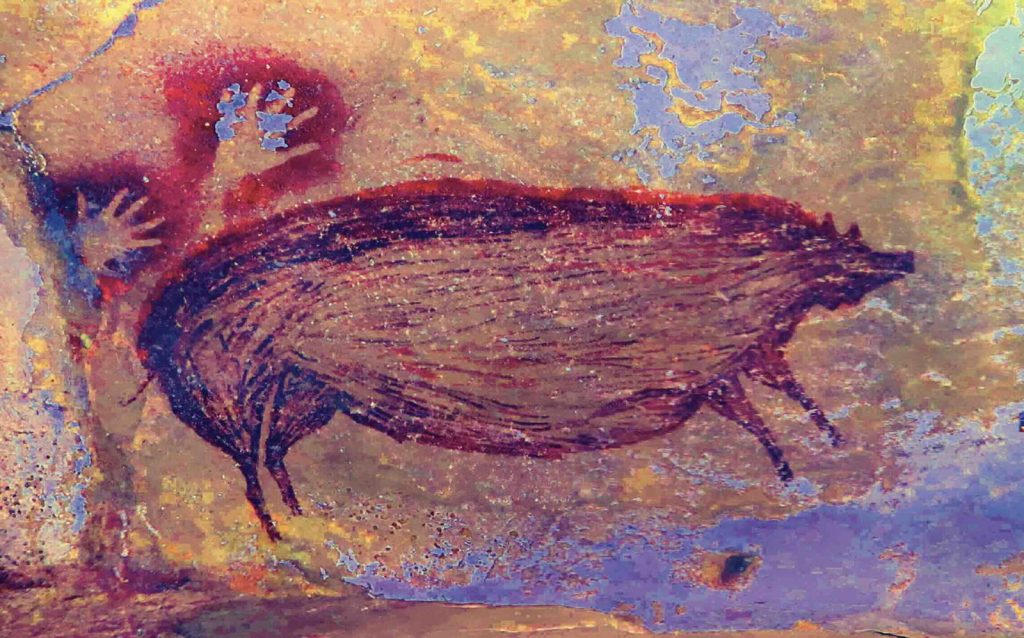New evidence has reaffirmed that cave paintings in Indonesia’s Sulawesi island are the oldest in the world, with researchers finding the mysterious art to be 51,200 years old.
The discovery pushes back the timescale of human activity on Sulawesi and raises new questions about the origins of the island’s ancient art and its relationship to early human migration.
A recent study using modern laser ablation techniques has examined cave art, which includes ancient depictions of animals such as pigs and cows, as well as stick figures of anthropomorphic forms, and new analysis has revealed that the art may be thousands of years older than previously thought.
But the extreme antiquity of the cave artwork might suggest another intriguing possibility: that its creator might not have been a modern human, but one of our ancient hominin relatives. If such a find were to prove true, it would have profound implications for the origins of representational art and the cognitive capabilities of our now-extinct hominin relatives.
The Sulawesi Mystery
Renowned for its ancient cave paintings, Sulawesi has long fascinated archaeologists. Among the island’s most famous cave paintings is a 14-foot-wide panel depicting a crude image of an ancient human hunting what appears to be a warthog or dwarf cow with a spear.
Previous studies have already revealed that the island contains what archaeologists recognize as some of the oldest rock art in the world. A process called dissolved uranium series (or U-series) was used to analyze the calcite deposits that formed above the rock art at Maros-Pangkep, a rock art site in the southern part of the island. The technique scans the rock walls without taking physical samples and provides a more accurate estimate by distinguishing between layers of sediment.

But in a recent study, researchers led by Indonesian archaeologist Adi Orgus Octaviana used what they call a “novel application of this approach” called laser ablation U-series imaging, which allowed them to more precisely date some of the region’s oldest cave art.
“This methodology improved spatial accuracy,” the researchers wrote in a recent paper detailing their study, which resulted in older minimum dates for previously dated artworks.
Dating the world’s oldest cave paintings
New analysis has revealed surprising results: hunting scenes found at Leang Bru Shipon IV, previously dated to at least 43,900 years ago, have now been found to be closer to at least 51,200 years old, making the artworks at the site at least 4,040 years older than originally estimated.
“This narrative composition, painted at least 51,200 years ago, depicts a human-like figure interacting with a pig and is now known to be the world’s oldest surviving example of figurative art and visual narrative,” the authors of the new study say.
The authors add that the new analysis reveals that the origins of figurative depictions of animals and humans go much deeper than previously realized.


Of course, revising the dates of the Sulawesi cave art raises new questions about which species of ancient humans actually lived there as ancient artists. According to the most commonly accepted timeline, modern humans left Africa as recently as 50,000-60,000 years ago, but could have left as early as 90,000 years ago.
Given the more recent estimates of when the ancient migration began, the question arises as to how likely it was that modern humans were present on Sulawesi at the time of the newly re-dated cave art. Although the oldest modern human remains found on the island are no older than 25,000 years ago, evidence of human presence in the form of rock shelters and the use of stone tools suggests that humans may have been there much earlier, as early as 118,000 years ago.
How modern humans could have arrived on the island so long ago is a difficult question, but our ancient cousins were almost certainly present on Sulawesi at the time, and previous fossil finds have provided compelling evidence of a human presence on the island dating back to 194,000 years ago.
Challenging old theories
The new finds push back the use of figurative art in Sulawesi and raise questions about what species made it, as well as casting doubt on previous beliefs that such art originated in Europe at the end of the Ice Age.
The team’s findings also suggest that humans may have been making such art long before they arrived in Asia, or even before modern humans are believed to have left Africa — a controversial possibility that some researchers, including British anthropologist Chris Stringer, have begun to raise in recent years.
But if it proves that other hominin species possessed the cognitive abilities necessary to create representational art long ago, it could overturn existing ideas about the capabilities of our early human ancestors and their hominin relatives.
At the very least, the authors acknowledge in their study, the new findings suggest “a rich narrative culture, particularly in which landscape representations were used to tell visual stories about human-animal relationships, early on in the long history of Homo sapiens in the region.”
The project led by Octaviana et al.The story of 51,200-year-old Indonesian cave paintings” was published in the journal Nature July 3, 2024.
Micah Hanks is editor-in-chief and co-founder of The Debrief. He can be reached by email at Email: [email protected]His work micahhanks.com And for X: Micah Hanks.



